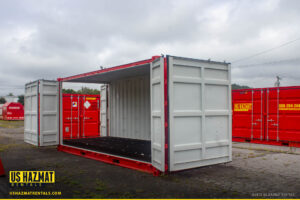“ATTN: A CHEMICAL INCIDENT INVOLVING TOXIC SUBSTANCES HAS BEEN DETECTED IN YOUR COMMUNITY. EVACUATE IMMEDIATELY. SURROUNDING AREAS SHOULD SHELTER IN PLACE INDEFINITELY.” Imagine receiving this dire automated text message in the wee hours before dawn. The early morning wakeup call in Conyers, Ga., couldn’t have come at a worse time, as the affected communities are still reeling from the fallout of Hurricane Helene. Residents’ phones began blowing up with these dire warnings of impending toxic chaos urging them to seek shelter and seal off doors and windows following a chemical facility fire at a local biological diagnostics and testing lab. Although no serious injuries were reported from the resulting inferno, several Atlanta residents reported a “strong smell of chlorine” emanating from a suffocating fog-like amalgamation of gas and condensed vapor. Some residents reported eye, nose, and throat irritation, while the long-term residual effects from the toxic exposure are unknown.
A Tough Week in Georgia
A sprinkler system at the biolab facility reportedly malfunctioned, prematurely spraying water on a reactive chemical causing an inexorable chain reaction as the hazardous plume ascended skyward before drifting northeast. While the toxic release was more than enough for a cause of alarm for Georgia firefighters, their efforts were further stymied as the heated airborne toxic substances also sparked a fire on the biolab’s roof. Although firefighter initially contained the blaze, those efforts would be for naught as the structure’s roof, unable to bear the abject gravity of the dire situation, would later succumb to the toxic marooning and collapse with the weight of the community’s hopes for a safe return to their homes.
When Water Becomes the Enemy
While it might sound counterintuitive that the world’s most commonly used fire retardant is incompatible with certain hazardous materials classification groups, water acts as an accelerant and thermal catalyst for inorganic compounds and oxidizers. Water can produce rare exothermic reactions with many otherwise stable chemicals, such as sodium amide, phosphorus pentoxide, chlorosulfonic acid, acetic anhydride, and potent oxidizing agents. While water and chlorine aren’t inherently compatible, the resulting toxic fog coalescing in the lower atmosphere could’ve resulted from breached drums or totes close to the fire. Stifling chlorine gas likely escaped from the exposed biolab canopy before condensing in the prevailing humid nighttime air, feeding off the departing tropical cyclone.
Preventing Similar Chemical Facility Fires With Astute Adherence

Hazardous materials handlers should always consult readily available safety data sheets when determining appropriate fire suppression for each relevant chemical stockpile in their inventory. While water is an acceptable retardant for most dangerous chemicals, other arcane legacy chemicals and oxidizers necessitate dousing with carbon dioxide, dry chem, or sand fire extinguishing. A safety data sheet will also provide fire-fighting instruction and suitable chemical locker building specifications crucial in preventing dangerous chemical exposure to incompatible materials.
Still Not Sure Which Fire Suppression is Right for Your Company? Ask the Experts!
Our experienced and knowledgeable building advisors can provide practical chemical storage solutions, equipped with the latest firefighting technology, for every hazardous material storage dilemma in any industrial setting without impeding workflow operations. Each customizable chemical storage locker is built with your company’s unique specifications in mind without superfluous upselling or unnecessary extras, so your facility stays well within operating expenses while meeting OSHA safety standards for chemical storage. Our chemical storage lockers’ heat-activated fire suppression system can quickly douse inadvertent flames within the storage locker or upon remote activation. The appropriate fire retardant for each chemical storage scenario is piped through overhead pipes and sprinklers that automatically extinguish accidental fires within the storage locker. Standard explosion relief paneling on each locker will also prevent fires and potential explosions from damaging vulnerable personnel and equipment near the storage locker. Contact us today for a free quote and consultation! 

